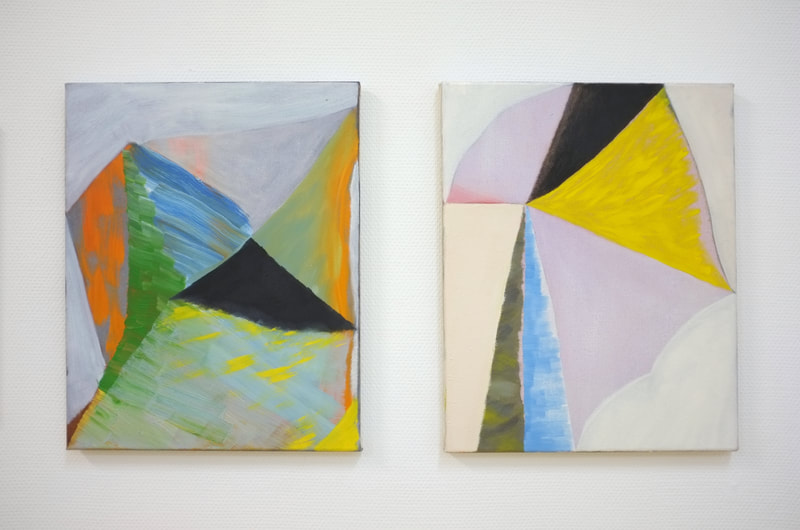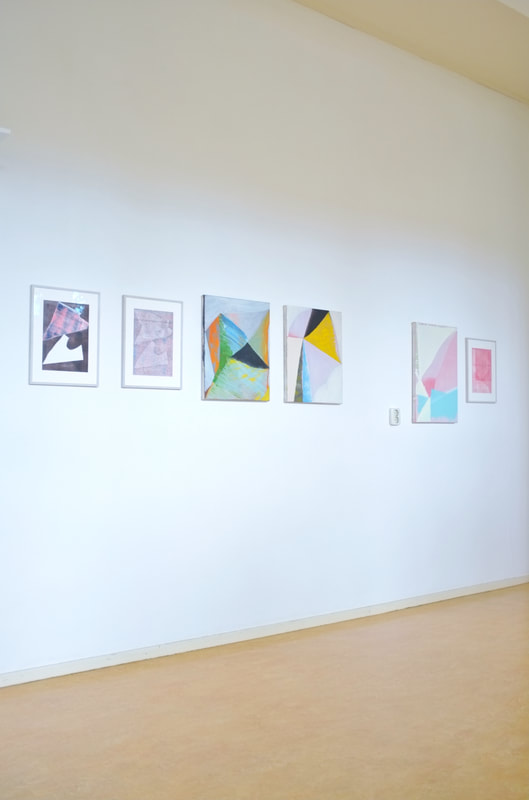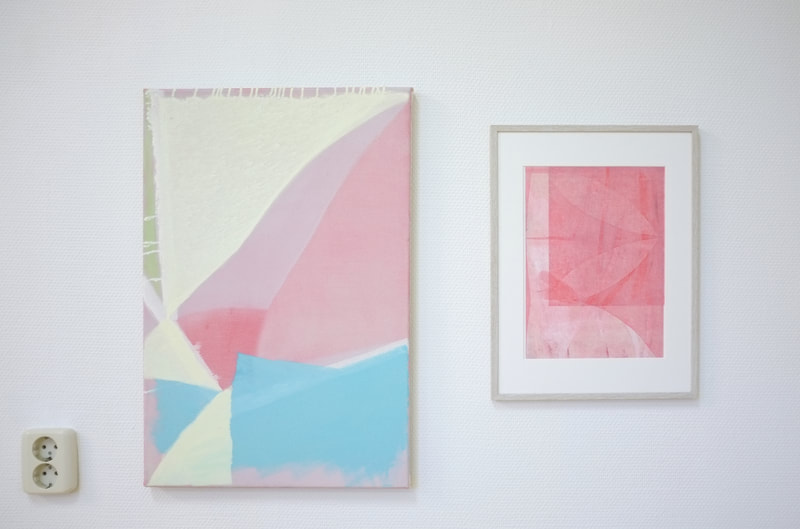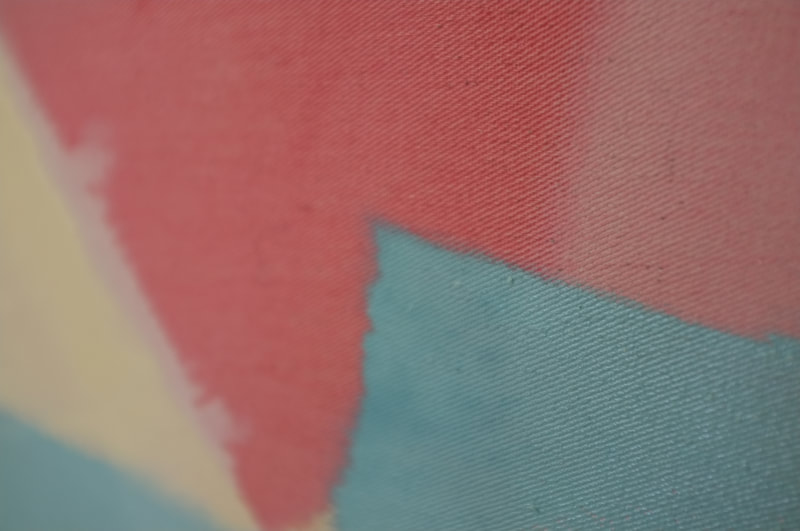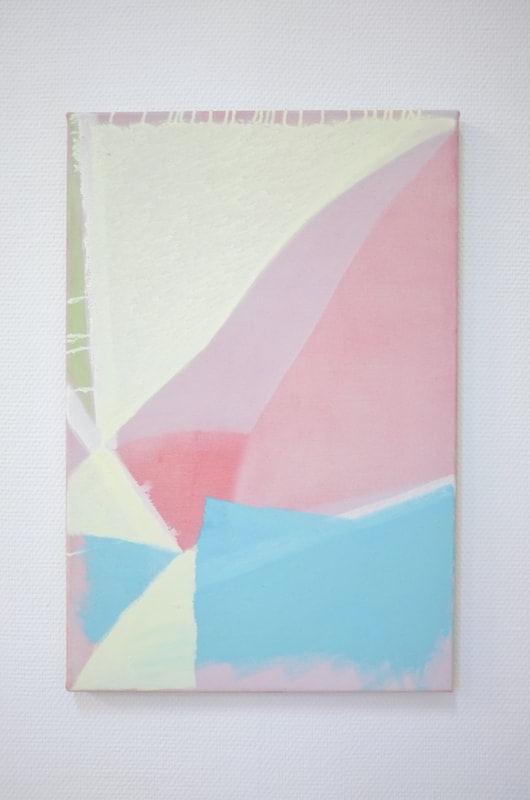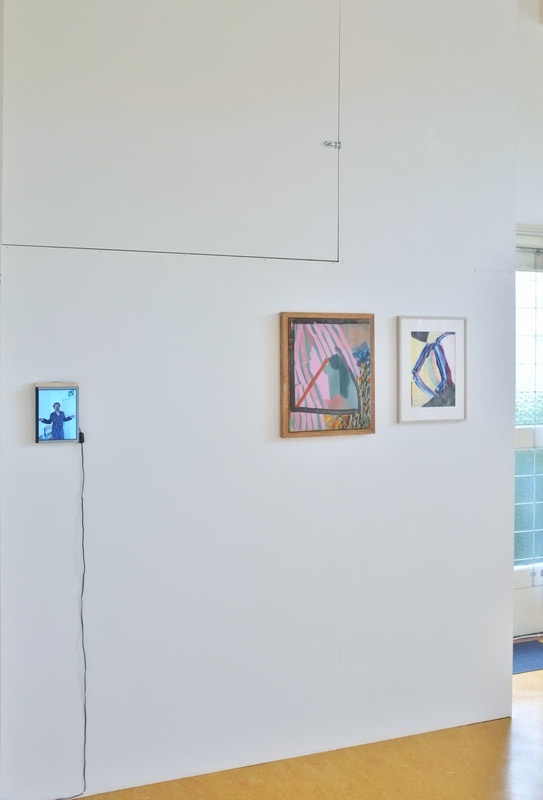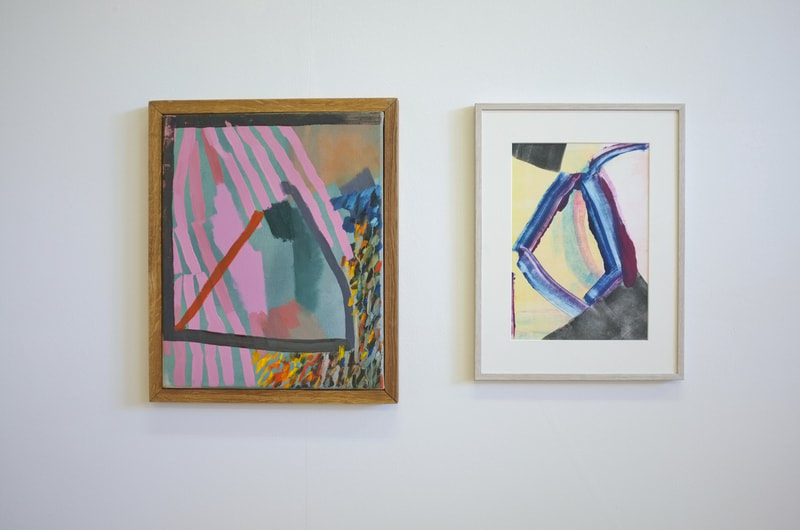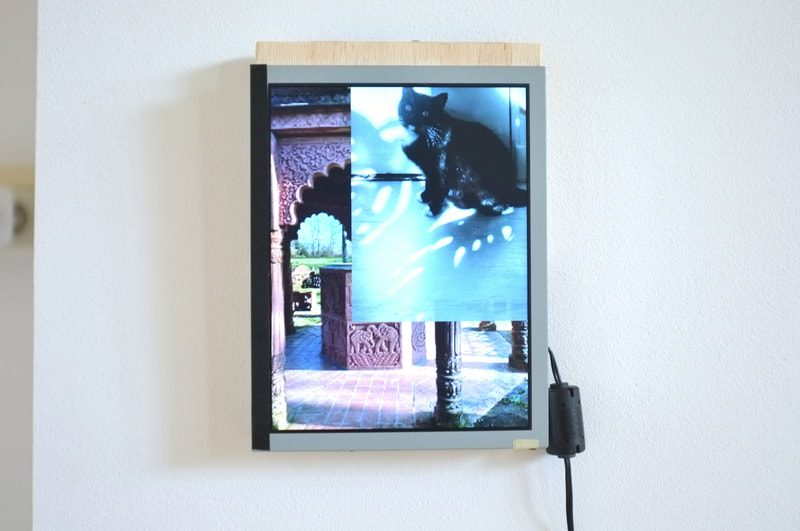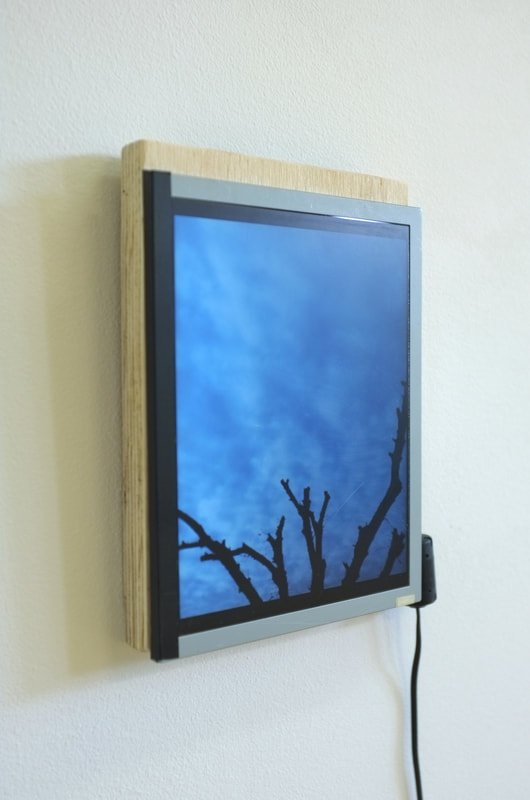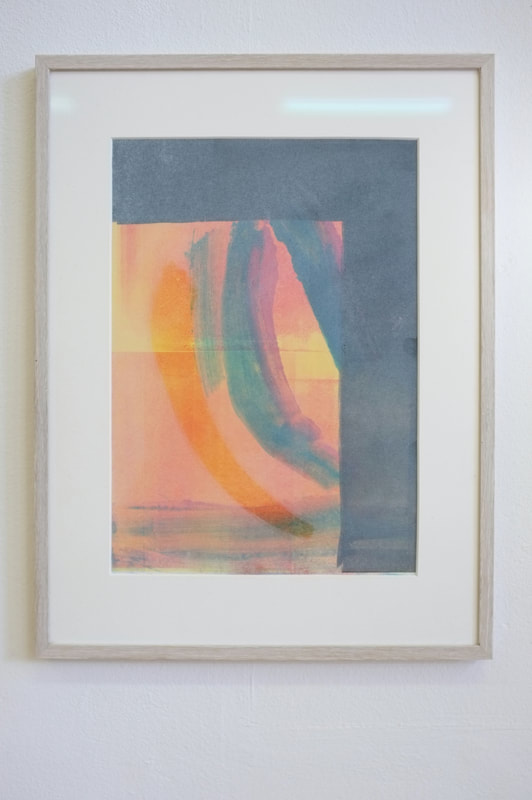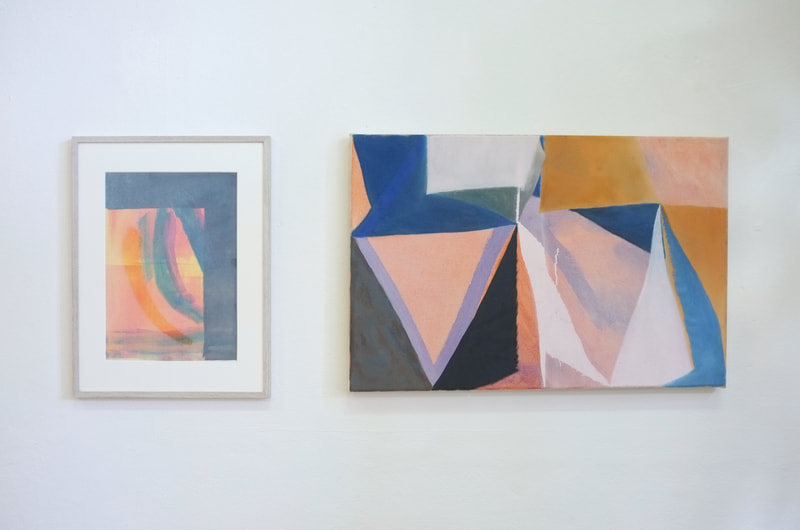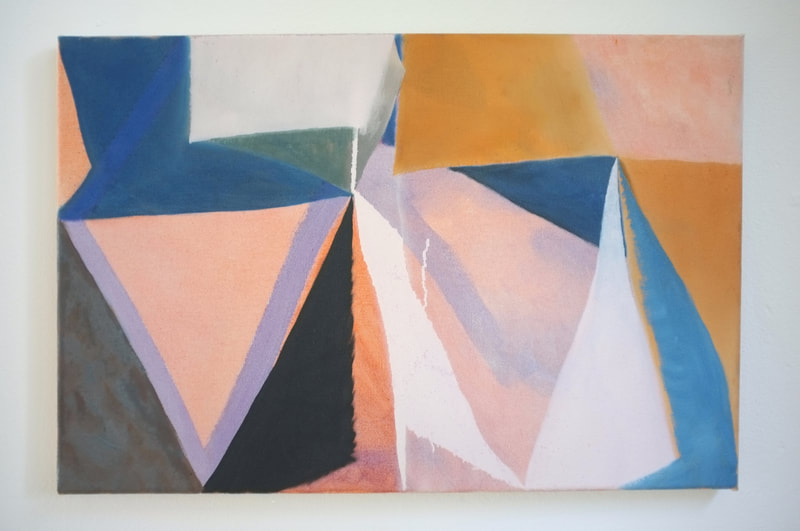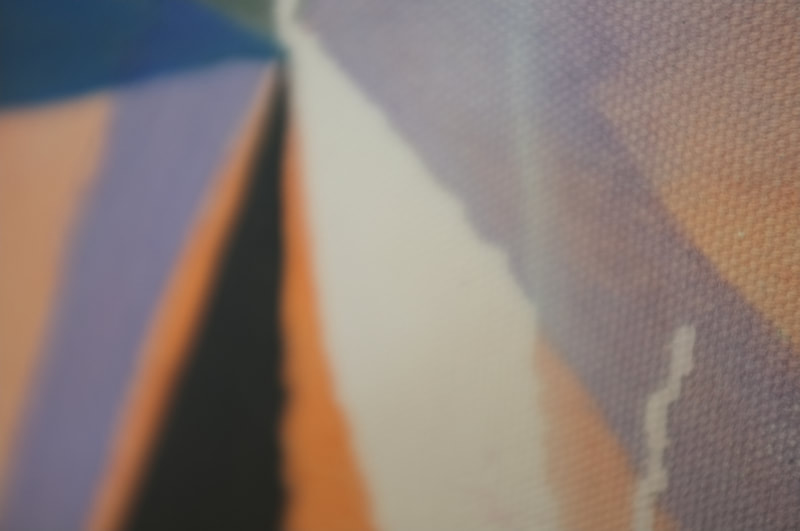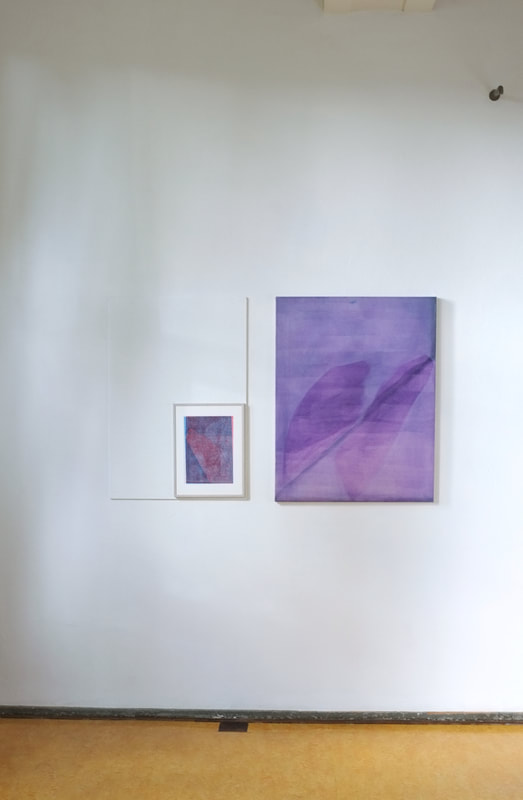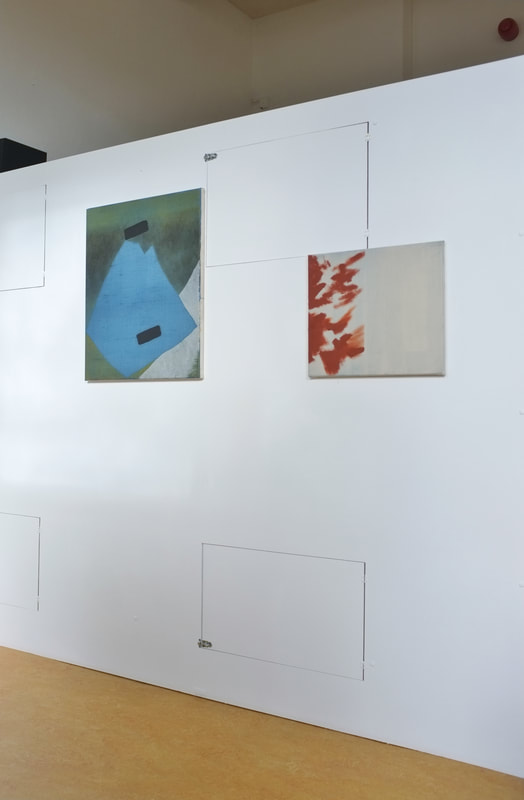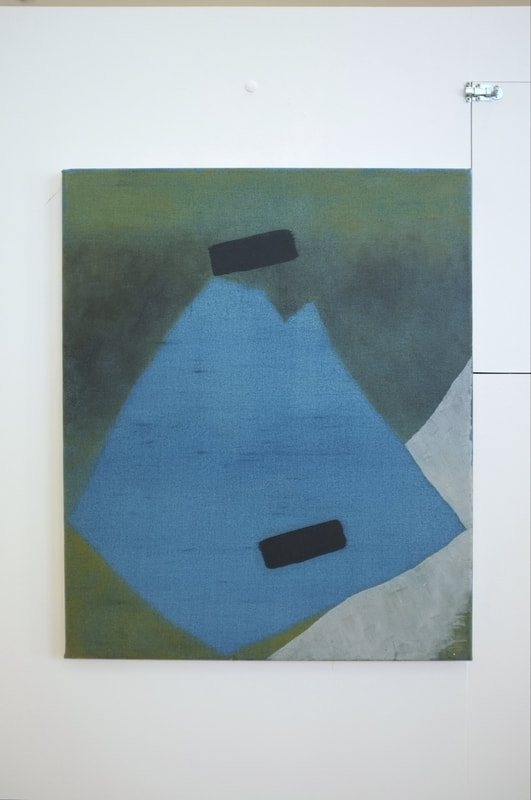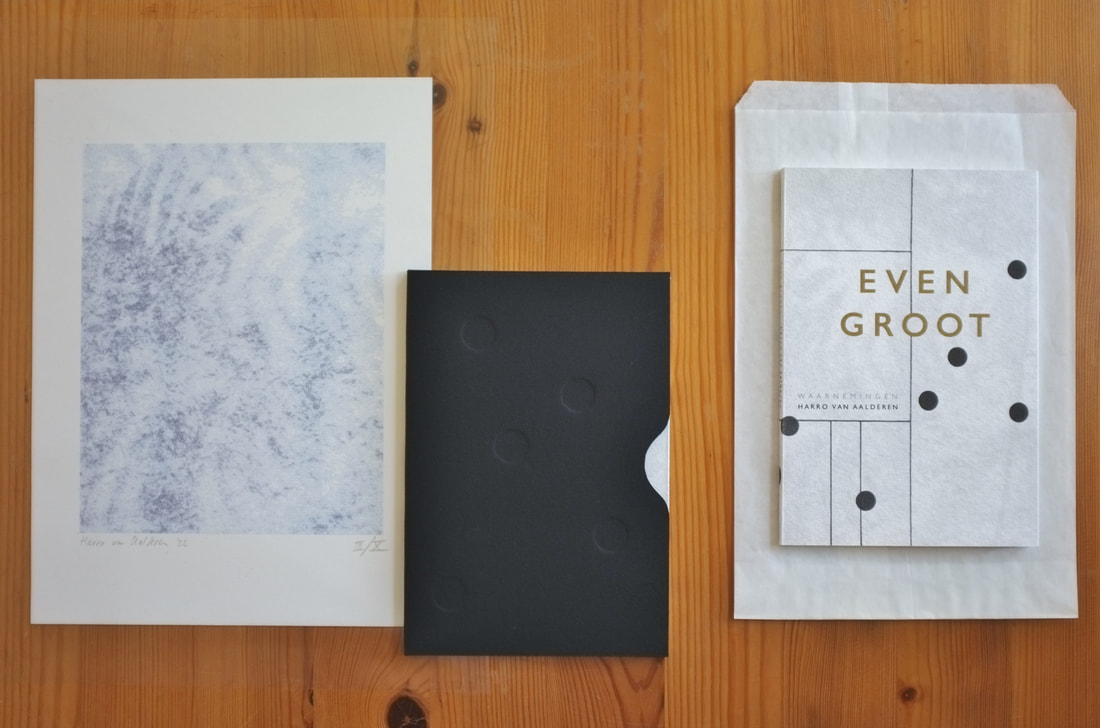R.S.O.L. archive
Room for the Study Of Loneliness : space for contemporary art
four inbetween days (these are the last images of a world that soon will no longer exist)
|
⇱
|
met werk van / with work by: Bas de Weerd info
R.S.O.L. 05.10 - 02.11 2022
R.S.O.L. 05.10 - 02.11 2022
De Franse filosoof Jean-Luc Nancy wordt gevolgd op verschillende locaties en momenten, gedurende een aantal gesprekken. Op zeker een moment, voor de aanvang van een gesprek, waarin de camera net klaar is gezet en gericht wordt - schijnbaar uit het niets, als een soort van soundtest - spreekt Nancy deze zin uit als een introductie van de beelden: These are the last images of a world that soon will no longer exist. Het greep Bas de Weerd als kunstenaar aan, omdat het gaat over de ambivalentie van het beeld in zijn relatie tot de werkelijkheid. Het beeld als een kentering, een omslagpunt in de tijd. Het beeld als een moment van ‘er zijn’, een moment dat zonder overgang weer overgaat in er niet (meer) zijn.
In zijn four inbetween days in the Room for the Study Of Loneliness toont De Weerd onder andere recente monotypes. Iedere afdruk is uniek en onherhaalbaar. Hij is bezig met de negatieve vorm, met de ‘gaten’, zo je wil. Gaten zijn ruimten die liggen te wachten om gevuld te worden, zich vol te zuigen - of om gewoon open te blijven liggen. Het zijn de open plekken in het woud van de werkelijkheid: de ‘Lichtung’ zoals Heidegger het zegt - de dragende grond van het mens-zijn die zelf geen geschiedenis heeft, in de zin dat ze ‘ooit, ergens' is ontstaan en is geworden wat ze 'nu' is. De ‘Lichtung’ is zelf niet aanwijsbaar maar is het ‘Iicht’ waarin al het werkelijke aan ons verschijnt, waardoor we opeens onszelf zien, als dat wat we zijn, daar waar we zijn.
De Weerd startte met de monotypes na het lezen van ’A Portrait of the Artist as a Young Man’ van James Joyce. De hoofdpersoon zet in gesprek met een klasgenoot zijn persoonlijke esthetische theorie uiteen:
“Het is duidelijk dat het beeld zich ergens bevindt tussen de geest en de zintuigen van de kunstenaar zelf en de geest en de zintuigen van anderen. Als je dit in gedachten houdt, zul je zien dat de kunst zich noodzakelijkerwijs in drie vormen verdeelt, die van de ene in de andere overlopen. Deze vormen zijn: de lyrische vorm, de vorm waarin de kunstenaar zijn beeld voorstelt in onmiddellijke relatie tot zichzelf; de epische vorm, de vorm waarin hij zijn beeld voorstelt in bemiddelende relatie tot zichzelf en tot anderen; de dramatische vorm, de vorm waarin hij zijn beeld voorstelt in onmiddellijke relatie tot anderen."
Hoe bouw je iets op losse grond? Voor De Weerd gaat het om die vraag: Hoe kijk je naar een wereld die zichzelf steeds achter zichzelf verbergt? Hij onderzoekt dat door te werken vanuit de dynamieken en structuren van het schilderen zelf: het materiaal en de randvoorwaarden zijn hierin het vertrek punt - om het beeld van daaruit, wankel, op te bouwen. Iedere keer opnieuw. Zoals het bewonen van een bouwvallig huis dat je steeds, dan weer hier - dan weer daar, aan het stutten bent, moet her-opbouwen.
“De manier waarop een schilderij zich vormt is uitgesproken ‘zoekend’. Het heeft steeds een wankele balans: die dan weer zus, en dan zo kan uitvallen - en die ergens daar tussenin gefixeerd wordt. De ene laag over de andere. Iets afdekken, en gelijk ontstaat er alweer een nieuwe situatie, die op zijn beurt weer deels begraven wordt. Ik probeer de samenhang in het doek te verschuiven door delen af te dekken waardoor andere onderdelen naar voren komen en nieuwe constellaties zich gaan vormen,” licht De Weerd toe: “Gedurende het werken blijft die dynamiek zich opstapelen.” Voorgrond en achtergrond zijn in het werkproces verwisselbaar. Alle delen van de compositie ‘leunen’ op elkaar en de samenhang in de structuur ervan, blijft verschuiven. “In de wankele samenhang die zo ontstaat voel ik een continue spanning,” gaat De Weerd verder: “Het proces van oriëntatie in de structuur van een werk is door de tijd heen steeds in beweging. Het beeld dat ik uiteindelijk toon is dus eigenlijk een momentopname.” Een werk is voor hem ‘wankel’ omdat het voort is gekomen uit een eindeloze serie van denkbare andere constellaties. De Weerd: “Met het schilderen van ieder doek gaan er denk ik ook momenten verloren, momenten waar je aan voorbij gaat. Eigenlijk nog voordat je het door hebt. Momenten ook, waar je nooit aan toe zal komen, omdat je – voordat ze aan zouden kunnen breken – al gestopt was.”
Met het grondeloze van zulk werk, dat in ons hier en nu aan ons verschijnt als de fixatie van een moment, en hoe dat ene moment zich verhoudt tot wat ervoor kwam en waar het uit voort kwam - en tot dat wat er nog niet is en misschien wel nooit zal zijn - worden we even ‘uit de tijd’ gelicht. Het is analoog aan een wereldbeeld waarvan de structuur op kantelen blijft staan. “Na het schuiven en stapelen komt er toch een moment waarop je achteruit stapt en de structuur ‘blijft staan’,” besluit De Weerd, “Het ‘kiepert' niet meer 'om’. Je besluit het ontstane evenwicht niet meer te verstoren en, met terugwerkende kracht, bleek dat dus te zijn waarnaar je toewerkte.”
Bas de Weerd (1990) groeide op in Casteren, de Kempen. In 2015 studeerde hij af aan de Academie Sint Joost van Den Bosch en hij woont en werkt in Maastricht. Eerder werkte hij onder meer in: Das Esszimmer, Bonn; Platform LivingRoom, Rotterdam; SEA Foundation, Tilburg; en: Galerie Mieke van Schaijk, 's Hertogenbosch.
In zijn four inbetween days in the Room for the Study Of Loneliness toont De Weerd onder andere recente monotypes. Iedere afdruk is uniek en onherhaalbaar. Hij is bezig met de negatieve vorm, met de ‘gaten’, zo je wil. Gaten zijn ruimten die liggen te wachten om gevuld te worden, zich vol te zuigen - of om gewoon open te blijven liggen. Het zijn de open plekken in het woud van de werkelijkheid: de ‘Lichtung’ zoals Heidegger het zegt - de dragende grond van het mens-zijn die zelf geen geschiedenis heeft, in de zin dat ze ‘ooit, ergens' is ontstaan en is geworden wat ze 'nu' is. De ‘Lichtung’ is zelf niet aanwijsbaar maar is het ‘Iicht’ waarin al het werkelijke aan ons verschijnt, waardoor we opeens onszelf zien, als dat wat we zijn, daar waar we zijn.
De Weerd startte met de monotypes na het lezen van ’A Portrait of the Artist as a Young Man’ van James Joyce. De hoofdpersoon zet in gesprek met een klasgenoot zijn persoonlijke esthetische theorie uiteen:
“Het is duidelijk dat het beeld zich ergens bevindt tussen de geest en de zintuigen van de kunstenaar zelf en de geest en de zintuigen van anderen. Als je dit in gedachten houdt, zul je zien dat de kunst zich noodzakelijkerwijs in drie vormen verdeelt, die van de ene in de andere overlopen. Deze vormen zijn: de lyrische vorm, de vorm waarin de kunstenaar zijn beeld voorstelt in onmiddellijke relatie tot zichzelf; de epische vorm, de vorm waarin hij zijn beeld voorstelt in bemiddelende relatie tot zichzelf en tot anderen; de dramatische vorm, de vorm waarin hij zijn beeld voorstelt in onmiddellijke relatie tot anderen."
Hoe bouw je iets op losse grond? Voor De Weerd gaat het om die vraag: Hoe kijk je naar een wereld die zichzelf steeds achter zichzelf verbergt? Hij onderzoekt dat door te werken vanuit de dynamieken en structuren van het schilderen zelf: het materiaal en de randvoorwaarden zijn hierin het vertrek punt - om het beeld van daaruit, wankel, op te bouwen. Iedere keer opnieuw. Zoals het bewonen van een bouwvallig huis dat je steeds, dan weer hier - dan weer daar, aan het stutten bent, moet her-opbouwen.
“De manier waarop een schilderij zich vormt is uitgesproken ‘zoekend’. Het heeft steeds een wankele balans: die dan weer zus, en dan zo kan uitvallen - en die ergens daar tussenin gefixeerd wordt. De ene laag over de andere. Iets afdekken, en gelijk ontstaat er alweer een nieuwe situatie, die op zijn beurt weer deels begraven wordt. Ik probeer de samenhang in het doek te verschuiven door delen af te dekken waardoor andere onderdelen naar voren komen en nieuwe constellaties zich gaan vormen,” licht De Weerd toe: “Gedurende het werken blijft die dynamiek zich opstapelen.” Voorgrond en achtergrond zijn in het werkproces verwisselbaar. Alle delen van de compositie ‘leunen’ op elkaar en de samenhang in de structuur ervan, blijft verschuiven. “In de wankele samenhang die zo ontstaat voel ik een continue spanning,” gaat De Weerd verder: “Het proces van oriëntatie in de structuur van een werk is door de tijd heen steeds in beweging. Het beeld dat ik uiteindelijk toon is dus eigenlijk een momentopname.” Een werk is voor hem ‘wankel’ omdat het voort is gekomen uit een eindeloze serie van denkbare andere constellaties. De Weerd: “Met het schilderen van ieder doek gaan er denk ik ook momenten verloren, momenten waar je aan voorbij gaat. Eigenlijk nog voordat je het door hebt. Momenten ook, waar je nooit aan toe zal komen, omdat je – voordat ze aan zouden kunnen breken – al gestopt was.”
Met het grondeloze van zulk werk, dat in ons hier en nu aan ons verschijnt als de fixatie van een moment, en hoe dat ene moment zich verhoudt tot wat ervoor kwam en waar het uit voort kwam - en tot dat wat er nog niet is en misschien wel nooit zal zijn - worden we even ‘uit de tijd’ gelicht. Het is analoog aan een wereldbeeld waarvan de structuur op kantelen blijft staan. “Na het schuiven en stapelen komt er toch een moment waarop je achteruit stapt en de structuur ‘blijft staan’,” besluit De Weerd, “Het ‘kiepert' niet meer 'om’. Je besluit het ontstane evenwicht niet meer te verstoren en, met terugwerkende kracht, bleek dat dus te zijn waarnaar je toewerkte.”
Bas de Weerd (1990) groeide op in Casteren, de Kempen. In 2015 studeerde hij af aan de Academie Sint Joost van Den Bosch en hij woont en werkt in Maastricht. Eerder werkte hij onder meer in: Das Esszimmer, Bonn; Platform LivingRoom, Rotterdam; SEA Foundation, Tilburg; en: Galerie Mieke van Schaijk, 's Hertogenbosch.
/
The French philosopher Jean-Luc Nancy is followed at various locations and moments, during a number of conversations. At a certain moment, before the start of a conversation, when the camera has just been set up and is being aimed - seemingly out of nowhere, as a kind of sound test - Nancy utters this sentence as an introduction to the images: These are the last images of a world that soon will no longer exist. It struck Bas de Weerd as an artist, because it is about the ambivalence of the image in its relation to reality. The image as a turning point, a turning point in time. The image as a moment of 'being there', a moment that, without transition, passes into not being there (any more).
In his four inbetween days in the Room for the Study Of Loneliness, De Weerd shows, among other things, recent monotypes. Each print is unique and unrepeatable. He is concerned with the negative form, with the 'holes', if you will. Holes are spaces that are waiting to be filled, to be filled in - or just to be left open. They are the open spaces in the woods of reality: the 'Lichtung', as Heidegger puts it - the supporting ground of humanity that has itself no history, in the sense that it came into being 'sometime, somewhere' and became what it is 'now'. The 'Lichtung' is itself not tangible but is the 'light' in which all that is real appears for us, through which we suddenly see ourselves, as what we are, where we are.
De Weerd started working on the monotypes after reading 'A Portrait of the Artist as a Young Man' by James Joyce. The protagonist explains his personal aesthetic theory in conversation with a classmate:
"The image, it is clear, must be set between the mind or senses of the artist himself and the mind or senses of others. If you bear this in memory you will see that art necessarily divides itself into three forms progressing from one to the next. These forms are: the lyrical form, the form wherein the artist presents his image in immediate relation to himself; the epical form, the form wherein he presents his image in mediate relation to himself and to others; the dramatic form, the form wherein he presents his image in immediate relation to others."
How does one build something on loose ground? For De Weerd, this is the question: How to look at a world that is always hiding behind itself? He reseaerches that by working from the dynamics and structures of painting itself: the material and its preconditions are the starting point - by, unstable, building the image from there. Every time anew. Like living in a dilapidated house that needs constantly shoring up and rebuilding, now here and then there.
"A painting is formed in a distinctly 'searchingly' manner. It always has a shaky balance: which can turn out this way, then that way - and that becomes fixated somewhere in between. One layer over another. Covering something up - and right away a new situation already arises, which then, in turn, becomes partly hidden. I try to shift the coherence in the canvas by covering parts, causing other parts to emerge and new constellations to form," explains De Weerd: "During the course of working, these dynamics keep building." Foreground and background are interchangeable in the working process. All parts of the composition 'lean' on one another and the coherence in its structure keeps shifting. "In the shaky cohesion thus created, I feel a continuous tension," De Weerd goes on, "Through time, the process of orientation in the structure of a work is always in motion. So, the image I ultimately show is actually a snapshot in time." For him, a work is "shaky" because it has emerged from an endless series of conceivable other constellations. De Weerd: "With painting each canvas, I think moments are also lost, moments you pass by before you have realised. Moments, too, that you will never get around to, because - before they could happen - you had already stopped."
With the groundlessness of such work, which appears to us in our here and now as the fixation of a moment, and how that one moment relates to what came before it and to where it came from - and to that which is not yet and may never be - we are momentarily lifted "out of time". It is analogous to a worldview which structure remains tilting. "After all shifting and stacking, a moment does arrive where you step back and the structure 'stays put'," De Weerd concludes, "It doesn't 'tip over' anymore. Where I decide not to upset the resulting balance anymore and that, retrospectively, turned out to be what I was working towards."
Bas de Weerd (1990) grew up in Casteren, the Kempen region. In 2015 he graduated from the Academy Sint Joost in Den Bosch and lives and works in Maastricht. Previously he worked in, among others: Das Esszimmer, Bonn; Platform LivingRoom, Rotterdam; SEA Foundation, Tilburg; and: Galerie Mieke van Schaijk, 's Hertogenbosch.
The French philosopher Jean-Luc Nancy is followed at various locations and moments, during a number of conversations. At a certain moment, before the start of a conversation, when the camera has just been set up and is being aimed - seemingly out of nowhere, as a kind of sound test - Nancy utters this sentence as an introduction to the images: These are the last images of a world that soon will no longer exist. It struck Bas de Weerd as an artist, because it is about the ambivalence of the image in its relation to reality. The image as a turning point, a turning point in time. The image as a moment of 'being there', a moment that, without transition, passes into not being there (any more).
In his four inbetween days in the Room for the Study Of Loneliness, De Weerd shows, among other things, recent monotypes. Each print is unique and unrepeatable. He is concerned with the negative form, with the 'holes', if you will. Holes are spaces that are waiting to be filled, to be filled in - or just to be left open. They are the open spaces in the woods of reality: the 'Lichtung', as Heidegger puts it - the supporting ground of humanity that has itself no history, in the sense that it came into being 'sometime, somewhere' and became what it is 'now'. The 'Lichtung' is itself not tangible but is the 'light' in which all that is real appears for us, through which we suddenly see ourselves, as what we are, where we are.
De Weerd started working on the monotypes after reading 'A Portrait of the Artist as a Young Man' by James Joyce. The protagonist explains his personal aesthetic theory in conversation with a classmate:
"The image, it is clear, must be set between the mind or senses of the artist himself and the mind or senses of others. If you bear this in memory you will see that art necessarily divides itself into three forms progressing from one to the next. These forms are: the lyrical form, the form wherein the artist presents his image in immediate relation to himself; the epical form, the form wherein he presents his image in mediate relation to himself and to others; the dramatic form, the form wherein he presents his image in immediate relation to others."
How does one build something on loose ground? For De Weerd, this is the question: How to look at a world that is always hiding behind itself? He reseaerches that by working from the dynamics and structures of painting itself: the material and its preconditions are the starting point - by, unstable, building the image from there. Every time anew. Like living in a dilapidated house that needs constantly shoring up and rebuilding, now here and then there.
"A painting is formed in a distinctly 'searchingly' manner. It always has a shaky balance: which can turn out this way, then that way - and that becomes fixated somewhere in between. One layer over another. Covering something up - and right away a new situation already arises, which then, in turn, becomes partly hidden. I try to shift the coherence in the canvas by covering parts, causing other parts to emerge and new constellations to form," explains De Weerd: "During the course of working, these dynamics keep building." Foreground and background are interchangeable in the working process. All parts of the composition 'lean' on one another and the coherence in its structure keeps shifting. "In the shaky cohesion thus created, I feel a continuous tension," De Weerd goes on, "Through time, the process of orientation in the structure of a work is always in motion. So, the image I ultimately show is actually a snapshot in time." For him, a work is "shaky" because it has emerged from an endless series of conceivable other constellations. De Weerd: "With painting each canvas, I think moments are also lost, moments you pass by before you have realised. Moments, too, that you will never get around to, because - before they could happen - you had already stopped."
With the groundlessness of such work, which appears to us in our here and now as the fixation of a moment, and how that one moment relates to what came before it and to where it came from - and to that which is not yet and may never be - we are momentarily lifted "out of time". It is analogous to a worldview which structure remains tilting. "After all shifting and stacking, a moment does arrive where you step back and the structure 'stays put'," De Weerd concludes, "It doesn't 'tip over' anymore. Where I decide not to upset the resulting balance anymore and that, retrospectively, turned out to be what I was working towards."
Bas de Weerd (1990) grew up in Casteren, the Kempen region. In 2015 he graduated from the Academy Sint Joost in Den Bosch and lives and works in Maastricht. Previously he worked in, among others: Das Esszimmer, Bonn; Platform LivingRoom, Rotterdam; SEA Foundation, Tilburg; and: Galerie Mieke van Schaijk, 's Hertogenbosch.
nieuw werk Harro van Aalderen
Gedurende four inbetween days was er een nieuw werk van Harro van Aalderen info te zien in R.S.O.L.:
Even Groot (2022). In cassette met riso-print (oplage 10) en los (oplage 25). / During four inbetween days, a new work by Harro van Aalderen info was on display at R.S.O.L.: Even Groot / As Grand (2022). In cassette with risograph-print (edition 10) and separate (edition 25). |
